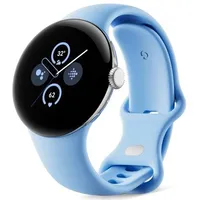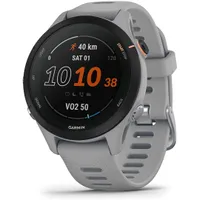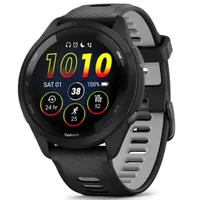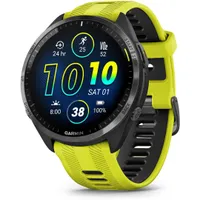How much you should spend on a running watch this Black Friday
In an ideal world, runners could all afford a fancy Forerunner 965 or Apple Watch Ultra 2, but most don't have to spend that much.

Somewhere between a $40 Xiaomi Smart Band and a $1,000 Garmin Epix Pro, there's the perfect running watch to help you run your first 5K or beat your marathon PR. Black Friday deals season is typically a great time to buy one, too. But how much should you spend on a running watch, with or without a deal?
That's not an idle question with the sheer number of options in this range. You have Samsung or Apple smartwatches that only last a few hours with GPS tracking, simple squircle watches that last days but can't do much besides tracking, or high-end running watches with mapping, holistic health data, and coaching.
Your decision will only get harder once Black Friday watch deals start up. Based on our experience covering deals events, you'll be bombarded with major markdowns on watches that tempt you into an impulse decision. Rather than spend more on features you don't need or less on a watch that won't last, you should know upfront what you need.
That's where I come in to help. I'm a runner who's tested and reviewed dozens of running watches, while writing a weekly column on the latest running tech and how I'm using it to get faster. I've broken down your running watch decision into different price categories, with picks worth buying now or ones worth waiting to see if you find a holiday deal.
Quick links: Our favorite running watches at each price point
- (Best sub-$100) Xiaomi Mi Band 8: $40 at AliExpress
- (Best sub-$200) Garmin Forerunner 55: $199 at Amazon
- (Best sub-$300) COROS PACE 3: $230 at Amazon
- (Best sub-$400) Google Pixel Watch 2: $349 at Best Buy
- (Best sub-$500) Garmin Forerunner 265: $449 at Best Buy
$250 or cheaper: All the basics
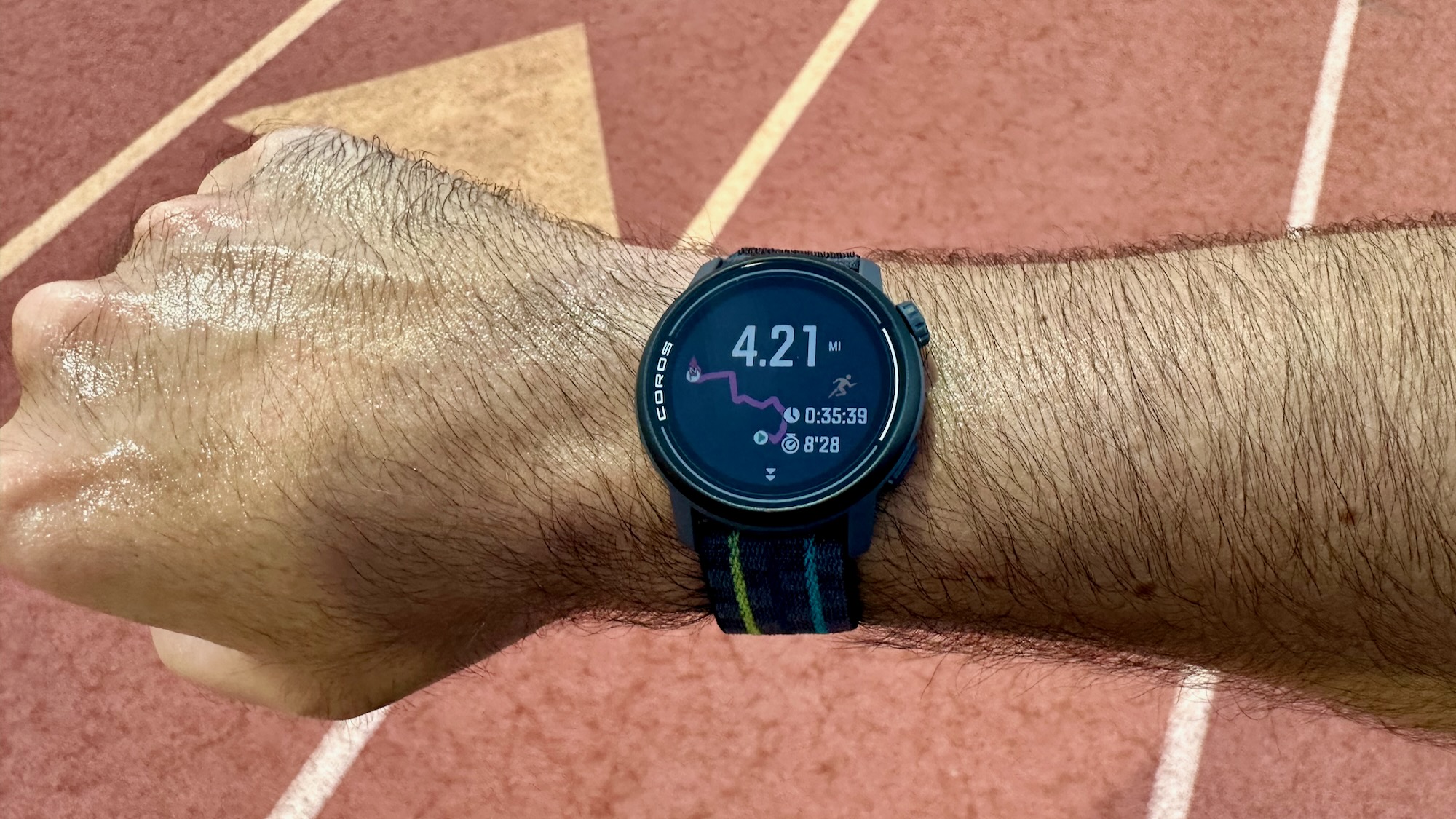
Believe it or not, most runners don't need to spend more than this. You can find a basic fitness tracker with built-in GPS, basic sports modes, sleep data, and a week or more of battery life for $100+. Or if you're not attached to getting a "watch" design, any of the best fitness trackers will cost $160 or less.
Only when you figure out specific perks you want — an AMOLED display, mic and speaker, music storage, downloadable training plans, recovery recommendations, hiking maps, and so on — should you spend more than a couple hundred. In this range, you're happy with simple sport tracking and health warnings if needed, or you found a great running watch deal on a more advanced tracker.
Runners who shouldn't spend over $250:
Get the latest news from Android Central, your trusted companion in the world of Android
- Self-guided runners who want post-run data saved to their app, but not much info during runs.
- Couch-to-5K runners: buy a more advanced watch once you've proven to yourself you can run consistently, instead of pressuring yourself with an expensive purchase.
- Runners who don't care about apps, answering phone calls, or other traditional watch smarts.
Your best sub-$250 running watch: COROS PACE 3
If you want a great running watch and don't want to spend too much, there's one definitive answer: the $230 COROS PACE 3, which I called the "best affordable running watch of 2023" in my review.
You just can't ask for better: hyper-accurate heart rate data, dual-frequency GPS, over three weeks of battery life per charge, excellent post-run data on your current fitness level, and a comfortable 1oz/30g design that's at least 20g lighter than most running watches on this list. Unlike most watches in this price range, you can expect it to get support and updates for years to come.
COROS PACE 3: $229 at Amazon
Reasons to buy it: An affordable Garmin alternative with similar data, battery life, and accuracy for a reasonable price.
Reasons to wait or skip: No smarts, apps, or tap-to-pay, with a dull MIP display. Look for PACE 2 deals during Black Friday if you want a cheaper alternative.
Cheapest alternative: Xiaomi Mi Band 8
Focused solely on saving money? The Xiaomi Mi Band 8 only costs $40, but delivers well beyond that price point with its 1.62-inch AMOLED pill display, 6-day battery with AOD active, continuous heart and blood oxygen monitoring, 150 sports modes, and a "pebble mode" that lets you attach it to your shoe during runs to help judge your running form. There's also a "smart companion" mode or "running courses" to judge your pace against a target during a run.
Xiaomi Mi Band 8: $40 at AliExpress | $58 at Amazon
Reasons to buy: You won't find anything cheaper that isn't crap. It's lightweight, doesn't require much charging, and has the health data you need.
Reasons not to buy: It isn't a "watch" so it relies on touch controls, it requires your phone for connected GPS, and the software is limited.
Other cheap running watches to consider during Black Friday:
The $199 Garmin Forerunner 55, an older watch with most of the Garmin essentials and a two-week battery life, is likely to get a discount during the holidays if you don't want to hold out hope for the Forerunner 65.
We don't know if Google will give a deal on the $160 Fitbit Charge 6 so soon after launch, but it's worth keeping an eye out if you're less interested in Garmin coaching and more interested in a lightweight band that tracks all of your key health and sleep data.
Lastly, you'll find plenty of cheap Amazfit watches in the sub-$200 range, many of them with a week of battery life, AMOLED displays, built-in GPS, and Zepp Health data that's pretty similar to Garmin's training load metric.
$250–$400: Smarter running watches

You don't just want a tracker. At this price point, you want some of the upgrades we mentioned above like AMOLED instead of MIP, a mic/speaker combo for Bluetooth calling or smart assistants, NFC tap-to-pay, music storage, or third-party apps.
At this price point, you can get smartwatches for fitness with real smarts paired with basic fitness tools and a 1- or 2-day battery life; conversely, you can get a running-focused watch that's more advanced for fitness but still has blind spots when it comes to smarts.
Runners who should spend ~$300 to $400
- You care about watch smarts as much as (or more than) fitness tech.
- You prefer clear AMOLED visuals to long-lived MIP displays.
- You're a pretty serious runner who won't give up their fitness resolutions in February.
Your best sub-$400 smartwatches for running: Pixel Watch 2 or Apple Watch Series 9
Speaking to both Android and iPhone users here, I want to give at least one slot to people who want an "uncompromised" running watch and don't mind the short battery life.
In that case, the Pixel Watch 2 gives you Fitbit health reports and sensors, Daily Readiness score, automatic workouts, Heart Rate Zone Training, and Pace Training, all of the essentials to make it a great casual fitness watch. And for Apple fans, the Series 9 has similar tools to keep to a pace or customized heart rate zone during a run or bike ride, plus the perk of Apple Fitness Plus workouts if you subscribe.
Google Pixel Watch 2: $349 at Best Buy
Reasons to buy: Fast performance, 32GB for music storage, GPS with Google location accuracy, 6 months of Fitbit Premium, third-party apps like Strava.
Reasons not to buy: Day or less of battery life, not the brightest display for outdoor use, have to pay for Fitbit eventually, no dual-band GPS
Best running-focused watch under $400: Garmin Forerunner 255
While I personally recommend you stretch your budget and buy the $449 Forerunner 265 — or wait for it to go on sale for Black Friday — the $349 Garmin Forerunner 255 is mostly has the same features, only with a dimmer non-touch display and longer battery life. We're talking hyper-accurate dual-frequency GPS and heart rate data, recovery recommendations based on how hard you ran, daily suggested runs based on your VO2 Max and training load, and other tools that'll help self-guided runners improve their times.
Garmin Forerunner 255: $349 at Amazon
Reasons to buy: Accurate GPS, altimeter, wrist-based running form analysis, recovery data, other metrics found on more expensive Forerunners
Reasons not to buy: The Forerunner 265 is a better long-term investment (see the next section), or you can save money on the Vivoactive 5 if you prefer AMOLED over an altimeter.
Other mid-range running watches to consider during Black Friday:
I can almost guarantee that you'll see the Garmin Venu 2 on sale during the holidays for $300 or less, like we did during Prime Day. It gives you an AMOLED display with Garmin essentials and animated exercises for the gym, though not the advanced running tools of a Forerunner or the mic and speaker of the pricey Venu 3. It's certainly worth considering.
Also take a close look at the Garmin Instinct Crossover if you're interested in a rugged hybrid watch with many of the same perks as the Forerunner 255.
$400-$600: High-end watches for serious athletes
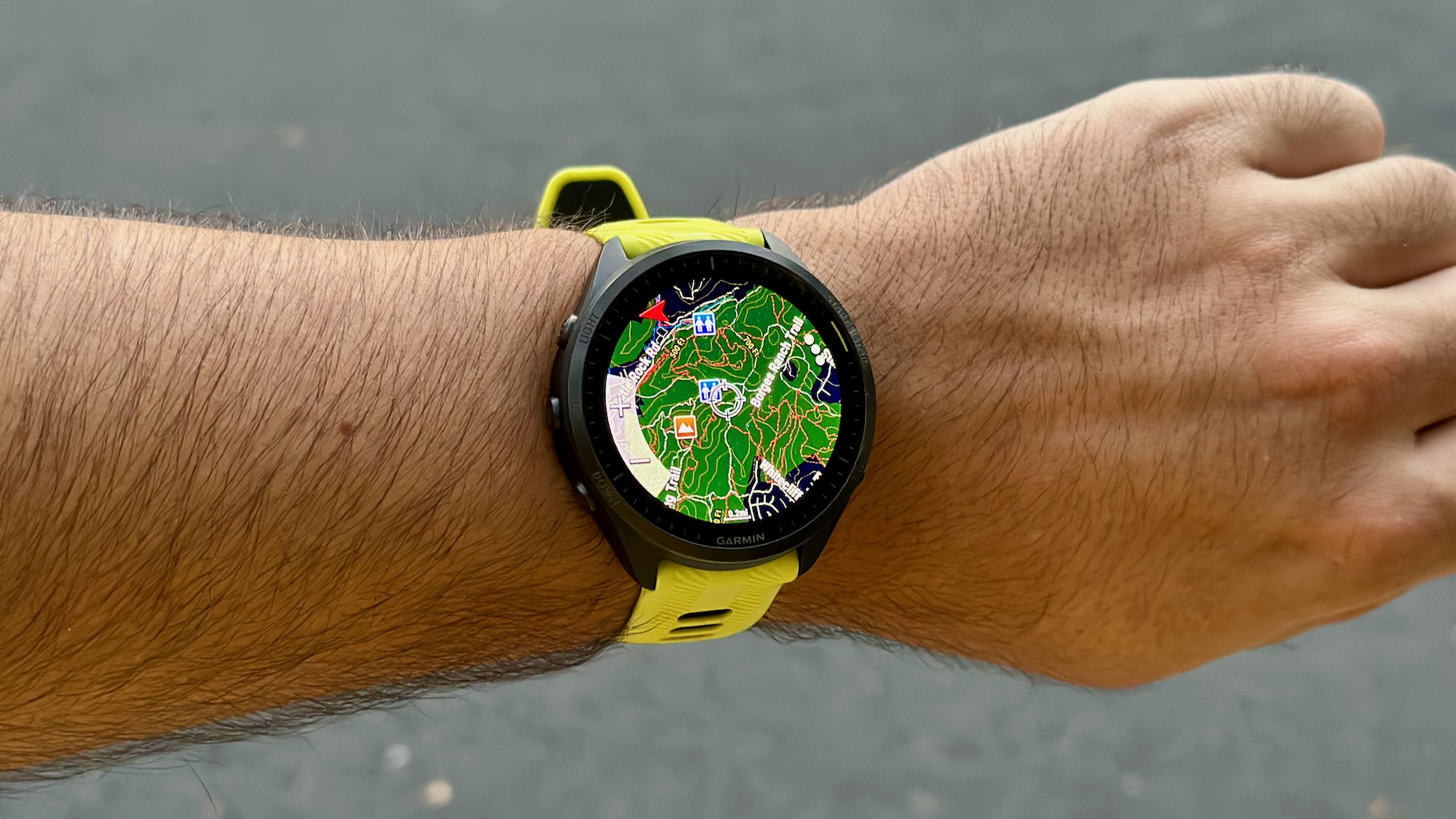
Anyone spending this much on a running watch should be aiming to boost their VO2 Max score into the 50s, balance their training load between aerobic tempo and threshold runs and anaerobic intervals and sprints, and hit a high mileage per week. Maybe you also cross-train or do triathalons, or need detailed topographical maps that show forks in the road if you're a trail runner. The point is, you're a serious runner, not a dilettante.
If you're still finding your footing as a runner, many of the tools on an advanced running watch could just make you feel discouraged rather than motivated, and you may end up feeling like you wasted your money. Start cheap, and work your way up before you spend the big bucks.
Runners who should spend $400–$600
- You're a consistent runner trying to improve your race times and overall fitness.
- You need specific Garmin tools like maps, real-time stamina, hill score, or multisport profiles that only come with higher-end models.
- You need a watch with more than the standard battery life.
- You're fine with plastic instead of stainless steel or titanium.
Best running watches under $600: Garmin Forerunner 965 or 265
I'm lumping both of these watches into this category because they're my two favorite running watches, and your choice is solely predicated on how much you're willing to spend.
The Garmin Forerunner 265 takes the 255 template and adds a bright AMOLED touchscreen, Training Readiness data that helps you decide when and how hard to work out, music storage, and wi-fi downloads instead of Bluetooth. You'll still use buttons during workouts, but the AMOLED display is more convenient for indoor use because it's much more readable and vibrant.
Upgrade to the Forerunner 965, though, and you get an extra 10 days of battery life per charge, pre-downloaded topographical maps, Strava Live Segments, real-time stamina data, Hill and Endurance scores for more specialized training, a larger display with better anti-reflective coating, and a titanium bezel.
These 965 upgrades are all nice to have, but even a "serious" runner could probably make do with the 265 unless you spend a lot of time on unfamiliar trails and need mapping. We can only hope Black Friday gives us a discount on either watch to lessen the sting a bit.
Garmin Forerunner 265: $449 at Best Buy
Reasons to buy: If you prefer AMOLED to MIP, need its excellent suite of running tools to guide your training, and want the latest model due to get updates over time.
Reasons not to buy: If you want any of the fantastic upgrades the Forerunner 965 gives you for $150 more, or if you don't like its lack of smarts in other areas.
Garmin Forerunner 965: $599 at Best Buy
Reasons to buy: If you specifically need hiking maps with Nextfork, Strava live segments, extra battery life, and other perks you don't get with the 265.
Reasons not to buy: It's quite an expensive watch that doesn't have perks like a mic/speaker or third-party apps that much cheaper watches offer.
Other running watches under $600 to consider:
Many of the best Garmin watches hit the same $449 price point as the Forerunner 265, only with different focuses. They're for runners with different priorities than running software alone.
If your first considerations are battery life or rugged design, then the $449 Garmin Instinct 2X Solar is a great alternative. It can deliver up to 145 hours of GPS tracking thanks to its solar recharging capabilities, or anywhere between 60 days to an "unlimited" number depending on how often you get outdoors in sunny conditions. It has military-grade protection against falls, plus a built-in flashlight that's bright enough to guide your trail at night or signal to other runners or cyclists not to run into you.
Your other option is the Garmin Venu 3, a more lifestyle-focused watch. it has a mic and speaker for Bluetooth calling and voice assistants, a bright AMOLED touchscreen for animated exercises, the latest Garmin Elevate heart rate monitor for more accurate health data and ECG readings, and more advanced Sleep Coaching with nap detection. Its running tools are more generalized, on par with a lower price tier, but its smarts beat out most running-centric watches.
$600 and up: Only pros need apply

We're now at a tier of running watches that, frankly, I haven't had the opportunity to test all that much, and don't necessarily need.
You'll find plenty of Garmin watches in the $1,000-and-up range for professional golfers, divers, aviators, soldiers, and other specific professions beyond basic fitness. If you need a watch like this for work, then you can try looking for deals during Black Friday, but it's more likely you'll have to pay full price on models this expensive.
The only relatively accessible Garmin models in this range are the Garmin Fenix and Epix lineups, and we have seen these go for a couple hundred dollars off during deals events. You may not get the newest watches like the Garmin Fenix 7 Pro or Epix 2 Pro, but if you're willing to go last-gen or skip the "Pro" models, you might see an $800 Fenix or Epix down to $600 with a good Black Friday watch deal.
Generally speaking, a Garmin Fenix or Epix has more advanced software than the Forerunner 965, along with higher-quality stainless steel or titanium materials that make them look high end but also weigh significantly more. Just keep that in mind, if you're buying one for running and have to feel it weighing down your wrist during a long race.
The only other watch worth mentioning in this price range is the Apple Watch Ultra 2. Specifically for iPhone users, it's an unusual case because it does have perks for runners — dual-frequency GPS, much longer battery life than a typical smartwatch, a massive 3,000-nit display, and watchOS software meant for running guidance — but also has all of the third-party software and smarts that running watches typically lack. You just have to accept the really high price in exchange.
With this, you should have plenty of information for your Black Friday watch deals hunting in a few weeks. You should decide in advance what you're willing to spend, then either choose a watch in that range or hope a watch from a higher tier drops into that range.
In the meantime, feel free to check out our hub for early Black Friday smartwatch deals; none of my above selections are specifically discounted right now, but you'll find plenty of watches in the $250-and-under range that you wouldn't normally find there!

Michael is Android Central's resident expert on wearables and fitness. Before joining Android Central, he freelanced for years at Techradar, Wareable, Windows Central, and Digital Trends. Channeling his love of running, he established himself as an expert on fitness watches, testing and reviewing models from Garmin, Fitbit, Samsung, Apple, COROS, Polar, Amazfit, Suunto, and more.


